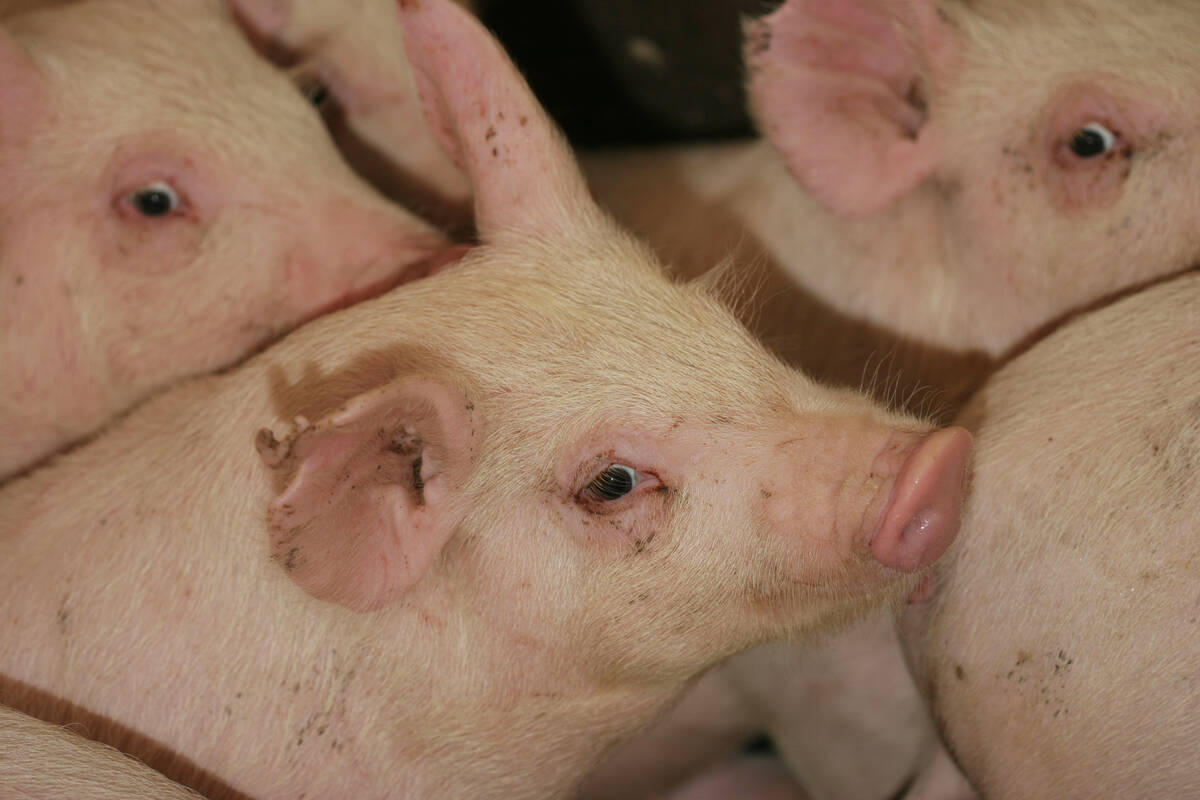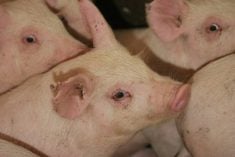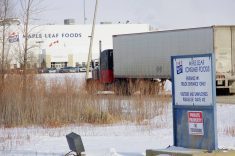Early weaning is getting an early death in many hog operations because it can cause more problems than it solves, a U.S. veterinarian told the Manitoba Swine Seminar.
“We have undervalued the benefit of age to the piglet,” Chad Hastad, a Minnesota swine specialist, said in an interview.
“Wean age is a critical factor.”
Piglets weaned at 21 days showed gains in health status, average daily gain and behavior, Hastad said. Sows also benefited from moving up weaning from 15 days post birth to 21 days.
Read Also

The Western Producer Livestock Report – September 25, 2025
The U.S. national live price average for barrows and gilts was $81.21 Sept. 17. It was $78.37 Sept. 9. U.S. hogs averaged $106.71 on a carcass basis Sept. 17, up from $106.10 Sept. 9.
Hastad said the financial gain is about 50 cents per pig for every day that weaning is delayed.
Moving from 15 days to 21 would bring an average gain of about $3 per pig.
Later weaned pigs saw their nursery death rate drop from 2.11 percent to 0.54 percent, and finishing mortality drop from 4.79 percent to 3.13 percent.
“They’re just able to better adapt to their environment – the weaning stress, the environments we put them in, the health challenges they face,” said Hastad about the reasons later-weaned pigs do so much better.
Later-weaned pigs also have more time to better develop their digestive systems, Hastad said.
Segregated early weaning swept the hog industry as a method of protecting piglets from diseases carried by the sow herd. It worked, but Hastad said health dangers from sows have been reduced to the point that early weaning is counterproductive.
“Health is still important, but we’ve accomplished a lot on the health side,” said Hastad.
“We’ve discovered that the piglets might not have been physiologically prepared to be weaned yet.”
Sows benefit from later weaning too. At the farms Hastad studied, every seven day increase in weaning age increased a sow’s following litter size by 0.7 pigs. Sows also don’t take longer to cycle back into fertility, so there is no loss in productivity.
Hastad said making a few extra dollars per pig should be enough for most producers to be willing to add barn space, but for those who balk at building more stalls, moving up weaning age even a couple of days has a big positive effect.
It helps the pig throughout its entire life.















